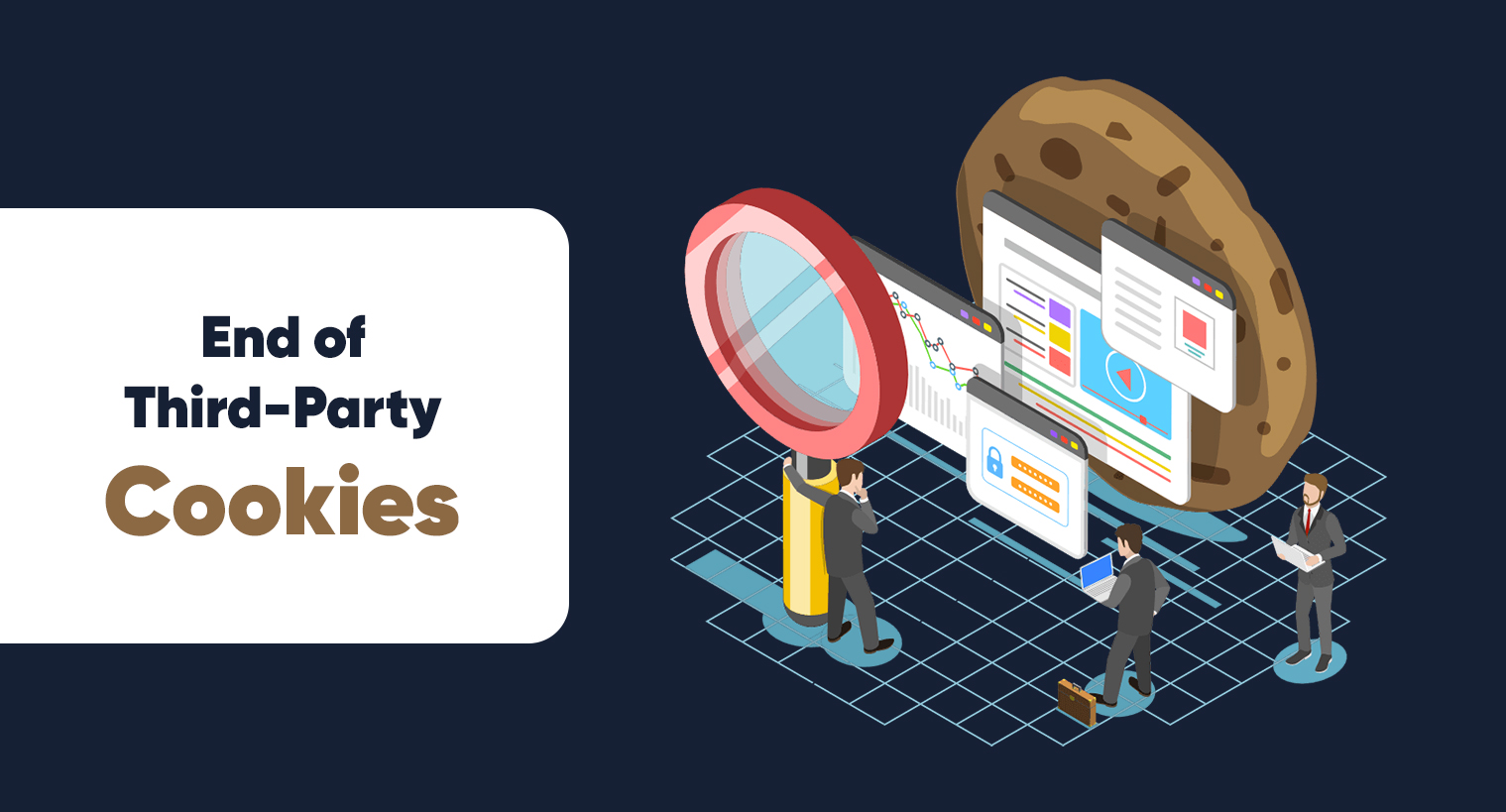5 Best Alternatives to Third-Party Cookies | 23 Mar, 2022

Have you ever imagined marketing your brand digitally without using third-party cookies? We understand the answer is a Big “NO.” But you know what? Google will make your nightmare come true by the end of 2023.
Yes, you read it right! The world’s most famous browser, Google Chrome, declared that they would get rid of the third-party cookies within two years by the end of 2023. Safari already banned third-party cookies and Firefox always blocks them when used for tracking. iOS 14 and macOS are adding new controls over user privacy and tracking. With the possibility to disrupt the whole digital advertising industry and upset publisher revenue streams, there’s still no suitable substitution.
What will Happen without the Third-Party Cookies?
What are cookies, and what purpose do they serve?
Cookies are the files that a site sends to the browser when it gets a user’s visit. The objective is to store important information and assist with further improving your browsing experience. These are used on most sites and are a standard technique for using the web today.
Cookies store the user’s browsing history to pages, applications, and interactions (clicks, passwords, etc.) for a specific period. So, every time the user re-visits the site that sent the cookies, the browser sends the information back, so the pages load quickly, already containing the user’s preferences and past data.
For instance, it allows the website to keep the user signed in or recollect what they left in their shopping basket.
With the optimization of website visits, cookies also help advance digital marketing strategies by enhancing the experience and aligning content according to user’s preferences and interests.
Alternative Proposals to Third-Party Cookies

A couple of proposals are drifting around, yet no agreement is there to move ahead. With the clock ticking down, publishers are naturally concerned. There is some action, yet there’s developing doubt regarding the actual progress.
Here are a few of the proposals that have received immense attention lately:
1. Change Measurement APIs
Change measurement APIs would permit advertisers to measure transformation and performance without utilizing third-party cookies. The Chrome development group has drifted the thought, and Apple has delivered an experimental attribution API.
2. Hidden Privacy Budgets
Advertisers may be given a “protection spending plan” that covers the amount of recognizable data gathered and shared to dispose of the program fingerprinting. Assuming that advertisers surpass the cap, they can lose API access.
3. Trust Tokens
Tracking an individual’s surfing activities across the web has additionally been used to prevent fraud. Third-party cookies assist with the location of spammers and fraudsters. Trust Tokens have been recommended as an alternative to cross-browser tracking at the individual level. Protection passes could be given to trusted users yet not be accessible for monitoring.
4. Potential of other Alternatives
Chrome is likewise finding ways of alleviating potential workarounds, for example, cache examination, navigation tracking, and network-level following. Some workarounds would help large organizations.
For instance, they use co-owned web-based properties to see themselves as first parties. It means they could share the cookies and data within related spaces. That is incredible if you’re Google and own YouTube or Facebook and own Instagram and WhatsApp. You can read about some more proposals in Google’s privacy sandbox.
5. Digital Fingerprinting
Digital fingerprinting identifies massive data files or structures using truncated data. A fingerprinting algorithm reduces a larger data set to a small informational index. It is also sometimes called a bit string to promote effective identification and search protocols.
Conclusion
To sum up, Google reports that advertisers have already lost 52% of advertising income when users block cookies. The rate is higher for news-related sites. What happens when it’s universal? And the more important query is, “what happens when third-party cookies no longer work and there’s no reliable replacement?
All of this brings us back to the same methodology. Developing first-party datasets is the most effective way to control your fate as a publisher.
To learn more about user-privacy and cookie less future, read out the other blog – How The Death of 3rd Party Cookie Matters to CTV Advertising.

BLOGS
Breaking Tradition: Innovative Marketing Strategies for Vietnam Tet 2025
One of the most significant cultural events for the Vietnamese, Tết Nguyên Đán, or the Vietnamese Lunar New Year, is almost here. Marking the beginning of spring, this time of year has, for generations, been a season for family gatherings, delicious feasts, and honoring ancestors. The week-long holiday witnesses the ...

BLOGS
5 Proven Black Friday and Cyber Monday Marketing Strategies for 2024
Black Friday and Cyber Monday (BFCM) are no longer exclusive to the U.S. market. It has gone global and is now one of the most important dates when every business wishes to ensure a spike in their online or in-store sales. With customers hunting for the deal, e-commerce businesses and ...

BLOGS
Why News Content is a Goldmine for Advertisers: Debunking Brand Safety Myths
Brand safety concerns have long clouded advertising alongside news content. As a marketer and advertiser, you might think twice before placing your ads against news stories, fearing harm to the reputation of your brand. However, new findings by Stagwell challenge those longtime fears, showing that advertising in news environments could be ...







